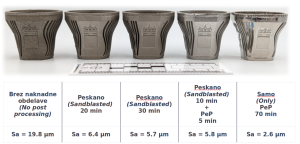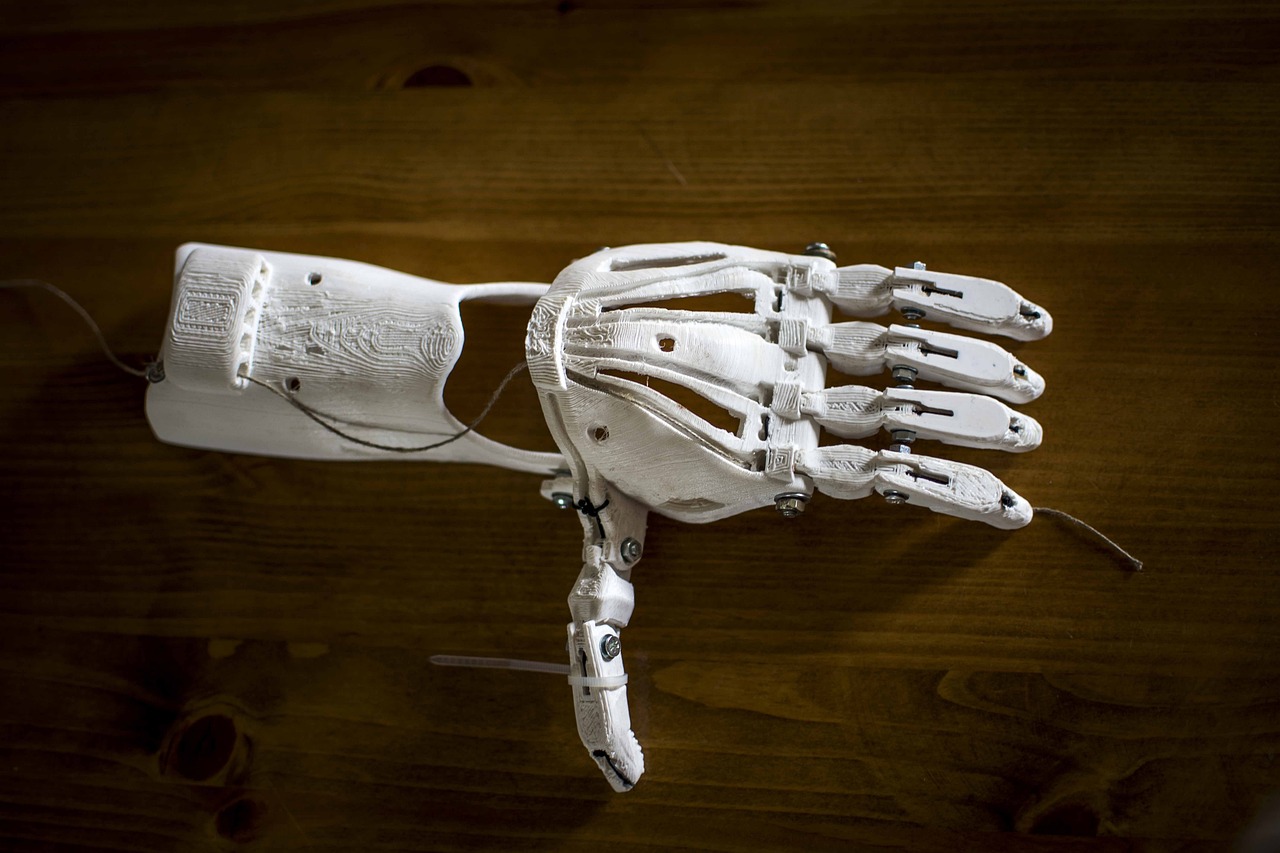Assoc. prof. dr. Joško Valentinčič, together with the researchers of the LAT Alternative Technologies Laboratory and in cooperation with the researchers of the Begakademie Freiberg Technical University, published an article in which they discuss the use of plasma electrolytic polishing (PeP) for the post-processing of metal 3D-printed products. The article was published in a journal Virtual and Physical Prototyping (IF=10.6)
Additive technologies are used more and more often for the production of metal components, as they enable efficient adaptation of shapes in a short time and lower consumption of material. However, the poor surface quality of the printed parts limits their direct industrial use. The growing demand for the post-treatment of metal parts produced by additive technologies both brings to the fore the potential of PeP technology as an environmentally friendly and efficient polishing method.
Many post-processing techniques have been developed over the years, such as laser polishing, chemical and electrochemical polishing, mechanical polishing, electroerosion, etc. The article presents a relatively new technology for the post-processing of 3D-printed metal components – PeP, which enables achieving smooth and shiny surfaces of metal 3D-printed products in an efficient and sustainable way. In this metal surface treatment method, material removal is achieved through a combination of electrochemical and plasma reactions. Compared to the conventional polishing methods used so far, the PeP method is faster and cheaper and causes less mechanical stress on the workpieces, which is especially important when processing the surfaces of 3D-printed products. The essential advantage of the method is also that it avoids the use of traditional electrolytes, such as sulfuric acid and phosphoric acid, which are dangerous both during use and later during transport or disposal. Instead, water electrolytes with a low concentration of neutral salts are used in the treatment, which are more environmentally friendly and also cheaper.

In the article, the authors present the research achievements in this area, the materials studied, the use of technologies for special forms of 3D-printed products, such as network structures, and the challenges that will need to be addressed in the future. The authors present possibilities for the use of PeP, including opportunities for automation, standardization, and numerical modeling to expand the utility of PeP technology. The importance of PeP technology in improving 3D-printed products in various industries and providing a sustainable solution for better surface quality is also highlighted.
The potential of PeP for the post-processing of metal components is enormous, but remains relatively underexplored. Through focused research and simultaneous collaboration with industry, PeP can become the leading method for achieving high-quality metal components.
